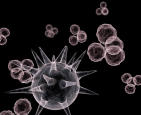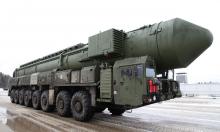Biological terrorism becomes more real
Terrorists have not learned how to use the deadly potential of biological agents yet
Terrorist acts in Beslan, Moscow, Kaspiisk, Volgodonsk, Buinaksk, Grozny, Ingushetia and so on, were organized to kill as many people as possible with the use of conventional means of destruction. Theoretic estimations of biological weapons and their destruction capacities have stirred up dangerous illusions in third world countries. A lot of politicians thought that biological weapons could give more significance to their countries in the nuclear world. With the use of biological agents terrorists will be able to force most powerful states to their knees. In order to minimize the consequences of a biological attack, special services are supposed to have a clear notion of motives and ideology of those people, who carry out such attacks. 
Terrorist acts may have extremely various motives. In addition to it, terrorists might use unconventional biological agents in their attacks.
Underground, 1970. The terrorists from this organization planned to use biological and chemical agents and poison water supply systems with them. The terrorists wished to prove that the US authorities were unable to control the situation in the country. Their ideology was a combination of revolutionary ideas and opposition against the American imperialism, which waged war in Vietnam.
Terrorist group RISE, 1972. Terrorists planned to attack people with aerosols spraying poison down from planes. Their motive was rather strange: the terrorists wanted to destroy as many people as possible to prevent the destruction of nature and create the race of super-humans. The criminals were college students, who were exposed to the influence of ecological terrorism and drug-culture of the 1960s. The first attack failed, when the authorities detected microbe cultures. Two prime suspects escaped to Cuba.
Rajneeshe Cult, a religious sect, 1984. Sect members carried out a biological terrorist act in a small US town of Dalls, Oregon, in 1984. They infected the food of salad bars and restaurants. Over 700 people fell ill with salmonella – it is still considered the largest biological terrorist act in history. The sectarians wanted to poison voters and win local elections. The ideology of the sect was based on an Indian religious cult. Two sectarians were arrested and imprisoned for 4.5 years. When they served the sentence, they went to Western Europe.
Minnesota Patriots Council, 1991. The terrorists of this group planned to act against the US federal authorities. The motive was a personal revenge, someone of them wanted to cause damage to the authorities. Ideologically, the group was the right wing of “patriots.” Perpetrators planned to attack their victims with ricin (the poison that is derived from the beans of the castor plant), imperceptibly applying it on victim's skin. A source from the FBI prevented the attack; four terrorists were arrested.
Aum Shinrikyo, 1995. This infamous sect has managed to perform largest, albeit unsuccessful biological attacks with the use of toxins and contaminants. In June of 1993, the sectarians attempted to disturb the wedding of the Japanese crown prince, as they sprayed the botulinic toxin with the help of automobile systems. They also tried to distribute anthrax spores from the roof of one of Tokyo buildings at the end of June 1993. In the middle of March of the same year, the sectarians left three cases in the Tokyo metro, in an attempt to contaminate the metro with the botulinic toxin. Aum Shinrikyo has conducted ten attacks with the use of biological agents: to implement the apocalypses prophecy of their guru, remove his adversaries and kill hesitating sectarians. The ideology of the sect was based on the cult of establishing the theocratic state in Japan with the charismatic leader at the head. Aum Shinrikyo attacked their own nation with most dangerous biological agents.
Biological terrorists might have various religious, political views; they can be guided with their personal ambition, revenge, and so on and so forth. The only feature that such people have in common is their bio-negative perception of the world. Terrorist motives, however, predetermine several peculiarities of biological terrorist attacks. Such crimes may be large in their scale and absolutely nonsensical in their nature (to demonstrate the inability of a government, to exterminate people and create a super-race, to implement a prophecy). They do not announce such acts of terrorism and they do not claim responsibility for them either. Biological attacks are used as an element of a long and indirect strategy. They are characterized with unexampled cruelty, an aspiration to kill as many people as possible, the civil population, first and foremost.
A lot of bio-terrorist acts have failed because terrorists have not learned how to use the deadly potential of biological agents. This situation will not last long, though. About 17 countries conduct scientific research in the field of biological weapons. Five of those countries are considered terrorists' accomplices. It is not ruled out that biological agents will be spread all over the world soon. The biological terrorism and man-caused epidemics are becoming more real.
Subscribe to Pravda.Ru Telegram channel, Facebook, RSS!





